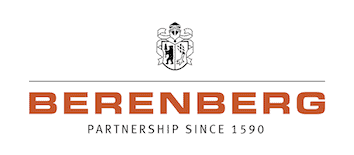
Jason Rand, global head of electronic trading and distribution at Berenberg
Over recent years, buy- and sell-side collaboration has driven algorithmic development, resulting in innovative ways of provisioning liquidity in a rapidly evolving landscape. The recent shift towards more dynamic, learning-based algorithmic models have positively contributed to the buy-side achieving trading objectives which ultimately have yielded better outcomes for all participants.
And yet, despite the crystallisation of Mifid II and the eventual settling of Brexit, the buy-side’s continued task to achieve the optimal rate of trading as they profile orders and balance the trade-off between liquidity and impact, seems ever more daunting. Whilst the buy-side remains vigilant in understanding where it is best to make future algorithmic innovations, the sell-side is keen to explore whether large-scale investments are economically viable. The question seemingly plaguing both participants at current is whether these innovations have evaluation models (Pre/Post trade TCA) capable of measuring their incremental value.
In response to profound market microstructure transformations, buy-side execution preference has shifted dramatically from schedule-based algorithms, typically VWAP and participation-based strategies, to Implementation Shortfall and Liquidity Seeking algorithms.
However, this fundamental trading shift has not been accompanied by an evolution in benchmarking methodologies that accurately assess the quality of these algorithms or their performance within a wheel framework. Most buy-side firms are utilising platforms that measure only raw IS without adjusting for exogenous factors such as expected trading costs (pre- and intra-trade), market regimes, or inherent alpha present in the order flow. This creates intrinsic bias in the evaluation process, and produces misleading results whilst making it difficult to determine what execution “quality” actually is.
Rand believes it is time to establish a more standardised and forensic analytical framework to help the buy-side make real structural changes to their execution decision-making. “Whether it’s the construction of broker algo wheels, classification of orders, or measurement of discretionary buy-side trader performance (through trader amends), our aim in building TIA (Trading Intelligence Analytics) is to democratise advanced trading analytics using dynamic data visualisation which will empower the buy-side to make more consistent and informed decisions.”
Quantify the market, contextualise the trade
Berenberg’s Data Science and Algorithmic Engineering teams draw on a multitude of sources, including partnering with BMLL, leveraging their Level 3 data to layer market event datasets with client trade data by linking unique order IDs via matching engine timestamps. Level 3 data draws insight into cancellations, amends, quote submissions, order queue details and unfilled orders. This allows Berenberg’s TIA to deliver a robust A|B testing environment across 5 years of market and trade data to efficiently optimise algorithmic performance.
Elias Hatchuel, lead architect of TIA, states, “The grouping of these extensive datasets into buckets based on provenance (negative or positive alpha, trader behaviour, etc) or numerical computation (slippage, % ADV), relative to trading outcomes, is where trade outperformance and algorithmic differentiation is truly realised.”
Separating trader contribution from algo performance
Traditional TCA has often struggled with complex orders, iceberg detection and multi-day trades resulting in an under appreciation of the value the buy-side trader can add on discretionary order flow through tactical parent order management. Very few platforms can successfully map the multi-day parent-to-child order relationship. This vacuum produces inconclusive outcomes leading to statistically significant datasets being excluded from the execution analysis process.
TIA intuitively ties together information at the parent and amend level to encapsulate a multitude of workflows. When a trader makes an amendment, irrespective of its nature (limits, urgency levels, part rates, strategy changes), a synthetic order is generated, benchmarked, and linked as a separate order all whilst being tied back to the overall parent.
“Being able to systematically quantify and separate the trader’s contribution from the algo’s performance at each amend allows the buy-side trader to measure the value of their decisions and the effectiveness of the strategy both independently and collectively. It also provides visibility and true attribution to slippage,” states Rand.
The relationship between alpha profiling & short-term price dynamics
In addition to order clustering, one of TIA’s most notable practical applications is its ability to identify alpha profiles. Alpha profiling provides traders with the ability to break down trading outcomes in their simplest forms; positive alpha (momentum against), negative alpha (value for), or no alpha (neutral).
Whether it’s by winning versus losing trades, buckets of ADV, or short-term price signals, applying alpha curves enable a continuous data feedback loop between TIA’s predictive analytics, Berenberg’s algorithmic engine (Genesis), and the SOR’s decision-making process.
Alpha curves identify price action in concise time horizons using set intervals around the order lifecycle. They succinctly highlight essential market dynamics and reinforce the iterative learning and balancing process between timing risk and liquidity capture.
TIA can generate alpha curves by a seemingly infinite number of factors, including algo wheel buckets, fund managers, traders, seasonality, or volatility regimes. Accounting for pre-trade momentum, delay cost, interval movement/impact, and price action from last fill to close are all essential in establishing the optimal rate of trading.
Conclusion
The partnership between Berenberg and BMLL is about democratising access to Europe’s most comprehensive analytics engines and largest data lakes. Overlaying millions of child orders on top of billions of market data points no longer requires an army of quantitative researchers or data engineers; it’s encapsulated in TIA. “By sitting side-by-side with our proprietary algorithmic offering, TIA enables Berenberg and its clients to compete at the highest levels of electronic trading. This isn’t ‘AI/ML as a service’ or jargonistic terminology, it’s far simpler than that. It’s about mapping complex relationships, standardising benchmarks, and giving all market participants, large and small, the chance to produce better outcomes for their clients,” says Rand.
